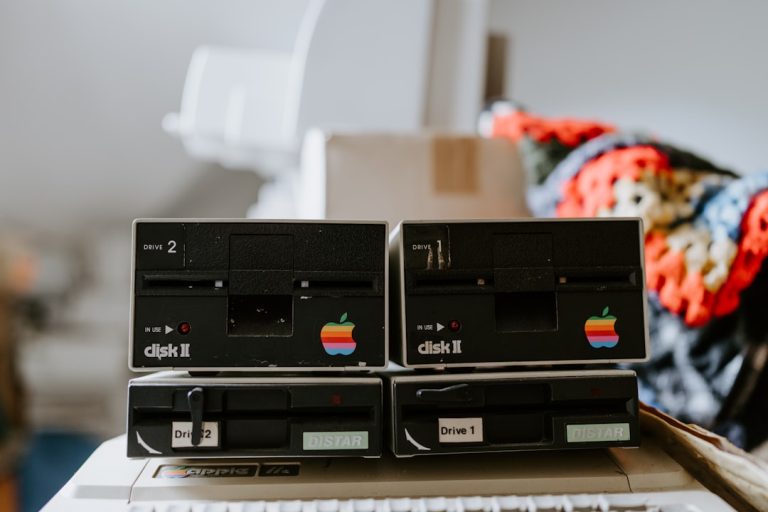
YouTube monetization is a multifaceted process that allows creators to earn revenue from their content. At its core, monetization involves enabling ads on videos, which generates income based on views and clicks. However, the landscape of YouTube monetization is not limited to just ad revenue.
Creators can also earn through channel memberships, Super Chats during live streams, and merchandise shelf integrations. To qualify for monetization, creators must meet specific criteria set by YouTube, including having at least 1,000 subscribers and 4,000 watch hours in the past 12 months. This threshold ensures that only serious creators who have built a substantial audience can start earning money.
Once accepted into the program, creators can access various monetization features, including the ability to run ads on their videos. There are different types of ads, such as skippable ads, non-skippable ads, and bumper ads, each with its own revenue potential.
Additionally, YouTube pays creators based on a metric known as CPM (cost per thousand impressions), which can vary significantly depending on factors like audience demographics, content type, and seasonal trends. Creators must stay informed about these dynamics to optimize their earnings.
Key Takeaways
- YouTube monetization involves earning money from your videos through ad revenue, channel memberships, and merchandise shelf.
- Creating high-quality content is essential for attracting and retaining viewers, and it involves using good equipment, editing skills, and engaging storytelling.
- Utilizing ads and sponsorships can help increase your revenue, but it’s important to maintain authenticity and transparency with your audience.
- Engaging with your audience through comments, live streams, and social media can help build a loyal fan base and increase watch time.
- Leveraging YouTube analytics can provide valuable insights into your audience demographics, watch time, and traffic sources, helping you make data-driven decisions for your channel.
Creating High-Quality Content
Investing in Quality Equipment
Creators should invest in good equipment, such as cameras and microphones, to ensure that their videos are visually appealing and audibly clear.
Delivering Valuable Content
However, high-quality content is not solely about production; it also involves delivering valuable information or entertainment that meets the needs and interests of the target audience. Researching trending topics and understanding viewer preferences can significantly enhance content relevance.
Crafting Engaging Storylines
A well-structured narrative can keep viewers engaged from start to finish, encouraging them to subscribe and return for more content. Creators should focus on crafting compelling introductions that hook viewers immediately and maintain a consistent tone throughout the video. Incorporating elements like humor, emotion, or suspense can further enhance viewer engagement. Additionally, creators should consider the pacing of their videos; maintaining a dynamic flow keeps the audience interested and reduces the likelihood of drop-offs during viewing.
Utilizing Ads and Sponsorships

Ads are a primary source of revenue for many YouTube creators, but understanding how to effectively utilize them is key to maximizing earnings. Creators can choose when and where to place ads within their videos, allowing for strategic decision-making based on content length and viewer engagement patterns. For instance, longer videos can accommodate multiple ad breaks without disrupting the viewing experience too much.
However, creators must strike a balance; excessive ad placements can frustrate viewers and lead to decreased watch time or subscriber loss. In addition to traditional ad revenue, sponsorships present another lucrative opportunity for creators. Brands often seek partnerships with YouTubers who align with their target audience and values.
Sponsored content can take various forms, from dedicated videos to product placements within existing content. Successful sponsorships require transparency; creators should disclose partnerships to maintain trust with their audience. Furthermore, selecting brands that resonate with their content and audience ensures that sponsored messages feel authentic rather than forced.
This authenticity can enhance viewer engagement and lead to higher conversion rates for the brands involved.
Engaging with Your Audience
| Metrics | Value |
|---|---|
| Number of followers | 10,000 |
| Post engagement rate | 5% |
| Comments per post | 50 |
| Shares per post | 100 |
Audience engagement is a critical component of building a successful YouTube channel. Engaging with viewers fosters a sense of community and encourages loyalty among subscribers. Creators can interact with their audience through comments, live chats during streams, and social media platforms.
Responding to comments not only shows appreciation for viewer feedback but also encourages further interaction, creating a cycle of engagement that benefits both the creator and the audience.
During live sessions, creators can answer questions, respond to comments instantly, and create a more personal connection with their audience.
This immediacy can enhance viewer loyalty and encourage them to return for future content. Additionally, incorporating viewer suggestions into future videos demonstrates that creators value their audience’s input, further strengthening the community bond.
Leveraging YouTube Analytics
YouTube Analytics is an invaluable tool for creators seeking to understand their audience better and optimize their content strategy. The platform provides detailed insights into viewer demographics, watch time, traffic sources, and engagement metrics. By analyzing this data, creators can identify which videos resonate most with their audience and adjust their content accordingly.
For instance, if analytics reveal that a particular video format consistently garners higher watch time, creators may choose to produce more content in that style. Moreover, understanding viewer retention rates is crucial for improving video performance. Analytics can show at which points viewers drop off during a video, allowing creators to pinpoint areas for improvement.
This data-driven approach enables creators to refine their storytelling techniques or pacing to keep viewers engaged throughout the entire video. Additionally, tracking subscriber growth trends can help creators identify successful strategies or content types that attract new viewers.
Diversifying Revenue Streams

Relying solely on ad revenue can be risky for YouTube creators due to fluctuations in CPM rates and changes in platform policies. Therefore, diversifying revenue streams is essential for long-term sustainability. Creators can explore various avenues such as merchandise sales, affiliate marketing, online courses, or Patreon memberships.
Each of these options allows creators to monetize their brand beyond traditional ad revenue. Merchandise sales have become increasingly popular among YouTubers looking to connect with their audience on a deeper level. By offering branded products like clothing or accessories, creators can foster a sense of community among fans while generating additional income.
Similarly, affiliate marketing allows creators to earn commissions by promoting products or services they genuinely believe in. By sharing affiliate links in video descriptions or during content segments, creators can provide value to their audience while earning passive income.
Collaborating with Other Creators
Collaboration is a powerful strategy for expanding reach and attracting new audiences on YouTube. By partnering with other creators in similar niches or complementary fields, individuals can tap into each other’s subscriber bases and introduce their content to new viewers. Collaborations can take various forms, including joint videos, shoutouts, or guest appearances on each other’s channels.
Successful collaborations require careful planning and alignment of goals between creators. It’s essential to ensure that both parties benefit from the partnership while maintaining authenticity in the content produced. For example, a beauty vlogger collaborating with a fashion influencer could create a series of videos showcasing how to style outfits with makeup looks.
This synergy not only provides value to both audiences but also enhances the overall viewing experience.
Staying Updated with YouTube Policies and Best Practices
The digital landscape is constantly evolving, and staying informed about YouTube’s policies and best practices is crucial for creators aiming for long-term success. YouTube frequently updates its community guidelines and monetization policies to ensure a safe environment for users while promoting quality content. Creators must familiarize themselves with these guidelines to avoid potential penalties or demonetization.
Additionally, keeping abreast of best practices in video production and marketing can significantly impact a creator’s success on the platform. This includes understanding SEO strategies for video titles and descriptions to improve discoverability in search results. Creators should also stay informed about emerging trends within the platform itself; adapting quickly to changes in viewer preferences or platform features can give creators a competitive edge in an ever-changing landscape.
By focusing on these key areas—understanding monetization options, creating high-quality content, utilizing ads and sponsorships effectively, engaging with audiences meaningfully, leveraging analytics for insights, diversifying revenue streams strategically, collaborating with other creators thoughtfully, and staying updated with policies—YouTube creators can build sustainable channels that thrive in an increasingly competitive environment.
If you are interested in learning more about YouTube monetization methods, you may want to check out this article on sersea.media. This article provides valuable insights and tips on how content creators can effectively monetize their YouTube channels and maximize their earnings. It covers various strategies and techniques that can help creators generate revenue from their videos and grow their audience. Be sure to give it a read for some useful information on YouTube monetization.
FAQs
What are the different YouTube monetization methods?
There are several ways to monetize a YouTube channel, including ad revenue, channel memberships, merchandise shelf, Super Chat and Super Stickers, and YouTube Premium revenue.
How does ad revenue work on YouTube?
YouTube creators can earn money through ad revenue by allowing YouTube to display ads on their videos. Creators receive a share of the revenue generated from these ads based on factors such as video watch time, ad engagement, and viewer demographics.
What are channel memberships on YouTube?
Channel memberships allow viewers to pay a monthly fee to access exclusive perks offered by a YouTube channel, such as custom badges, emojis, and members-only content. Creators receive a portion of the membership fees.
What is the merchandise shelf on YouTube?
The merchandise shelf feature allows eligible YouTube channels to showcase and sell their branded merchandise directly on their channel. Creators earn a commission on each sale made through the merchandise shelf.
What are Super Chat and Super Stickers on YouTube?
Super Chat and Super Stickers are features that allow viewers to purchase highlighted messages or animated stickers during a live stream or Premiere. Creators receive a portion of the revenue generated from these purchases.
How do creators earn revenue from YouTube Premium?
YouTube Premium is a subscription service that allows users to watch videos without ads. Creators earn a share of the revenue generated from YouTube Premium subscribers who watch their content.


